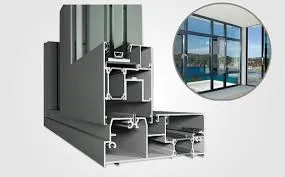decorative castings
The Allure of Decorative Castings A Timeless Craft
Decorative castings have long captivated the imagination of designers, architects, and art enthusiasts alike. This age-old craft combines artistry and functionality, resulting in stunning pieces that elevate both contemporary and traditional spaces. From ornamental ironwork to intricate architectural details, decorative castings serve as a testament to the skill of artisans who breathe life into metal, transforming it from a mere substance into a work of art.
A Brief History
The origins of decorative castings can be traced back to ancient civilizations, where craftsmen used metalworking techniques to create tools and artwork. In places like ancient Rome and Greece, decorative castings were often employed in architectural features such as columns and capitals. The practice flourished during the Industrial Revolution in the 19th century, as advancements in technology allowed for mass production. However, despite the shift toward industrial methods, the demand for unique, handcrafted decorative pieces remained strong.
Techniques and Materials
The process of creating decorative castings typically begins with the design phase, where artists sketch their visions and outline the intended functionality of the piece. Popular materials for decorative castings include bronze, aluminum, and iron. Each material offers its own unique qualities; for instance, bronze is favored for its durability and resistance to corrosion, while aluminum is lightweight and easy to mold.
The casting process itself involves several key techniques, most notably sand casting, lost-wax casting, and die casting. Sand casting is one of the oldest and most versatile methods, where a pattern is made in sand and then filled with molten metal. Lost-wax casting, on the other hand, allows for highly detailed designs, as a wax model is coated with ceramic material, melted away, and replaced with molten metal. Die casting is often used for more complex shapes and higher production volumes, making it an attractive option for manufacturers.
Applications in Architecture and Design
Decorative castings find their way into a vast array of applications, particularly in architecture and interior design. They are commonly used to produce ornate railings, gates, and balustrades that provide both safety and aesthetic appeal. In residential homes, decorative casting can transform mundane elements—such as light fixtures or fireplace surrounds—into focal points that draw the eye and evoke a sense of elegance.
decorative castings

Moreover, the versatility of decorative castings extends to outdoor spaces
. Garden décor like statues, fountains, and trellises showcases the beauty of craftsmanship while enhancing the overall landscape. These items not only bring a sense of personality to properties but also serve as timeless pieces that can be passed down through generations.The Role of Modern Technology
While the traditional methods of crafting decorative castings remain integral to the art, modern technology has also made significant contributions to the field. 3D printing and computer-aided design (CAD) have revolutionized the way artists conceptualize and create their work, allowing for greater precision and the ability to experiment with complex geometries. Additionally, advancements in alloys and coatings provide enhanced durability and a broader color palette, enabling designers to push the boundaries of creativity.
The Future of Decorative Castings
As we look toward the future, the world of decorative castings faces both challenges and opportunities. The rise of sustainability has prompted many artisans and manufacturers to seek eco-friendly practices, sourcing recycled materials and reducing waste during the production process. This shift not only aligns with contemporary values but also breathes new life into traditional crafts.
In an era where customization and personal expression are highly valued, decorative castings offer endless possibilities. Each piece tells a story, merging heritage with innovation. As designers continue to explore new themes and techniques, decorative castings are poised to maintain their relevance in the ever-evolving landscape of art and design.
Conclusion
Decorative castings are much more than mere embellishments; they are an enduring form of expression that bridges the gap between art and function. The skill, creativity, and dedication of artisans make this craft a cherished aspect of design, ensuring that decorative castings will continue to inspire and captivate for generations to come. Ultimately, the legacy of decorative castings lies not only in their aesthetic appeal but in their ability to connect people to the past while shaping the future of design.
-
Wrought Iron Components: Timeless Elegance and Structural StrengthNewsJul.28,2025
-
Window Hardware Essentials: Rollers, Handles, and Locking SolutionsNewsJul.28,2025
-
Small Agricultural Processing Machines: Corn Threshers, Cassava Chippers, Grain Peelers & Chaff CuttersNewsJul.28,2025
-
Sliding Rollers: Smooth, Silent, and Built to LastNewsJul.28,2025
-
Cast Iron Stoves: Timeless Heating with Modern EfficiencyNewsJul.28,2025
-
Cast Iron Pipe and Fitting: Durable, Fire-Resistant Solutions for Plumbing and DrainageNewsJul.28,2025
-
 Wrought Iron Components: Timeless Elegance and Structural StrengthJul-28-2025Wrought Iron Components: Timeless Elegance and Structural Strength
Wrought Iron Components: Timeless Elegance and Structural StrengthJul-28-2025Wrought Iron Components: Timeless Elegance and Structural Strength -
 Window Hardware Essentials: Rollers, Handles, and Locking SolutionsJul-28-2025Window Hardware Essentials: Rollers, Handles, and Locking Solutions
Window Hardware Essentials: Rollers, Handles, and Locking SolutionsJul-28-2025Window Hardware Essentials: Rollers, Handles, and Locking Solutions -
 Small Agricultural Processing Machines: Corn Threshers, Cassava Chippers, Grain Peelers & Chaff CuttersJul-28-2025Small Agricultural Processing Machines: Corn Threshers, Cassava Chippers, Grain Peelers & Chaff Cutters
Small Agricultural Processing Machines: Corn Threshers, Cassava Chippers, Grain Peelers & Chaff CuttersJul-28-2025Small Agricultural Processing Machines: Corn Threshers, Cassava Chippers, Grain Peelers & Chaff Cutters












